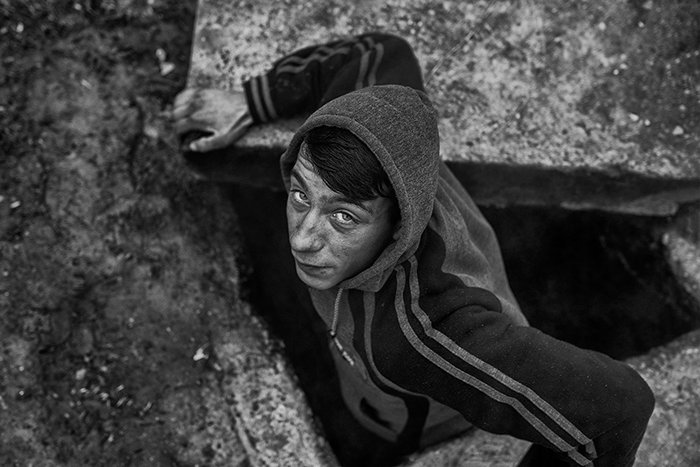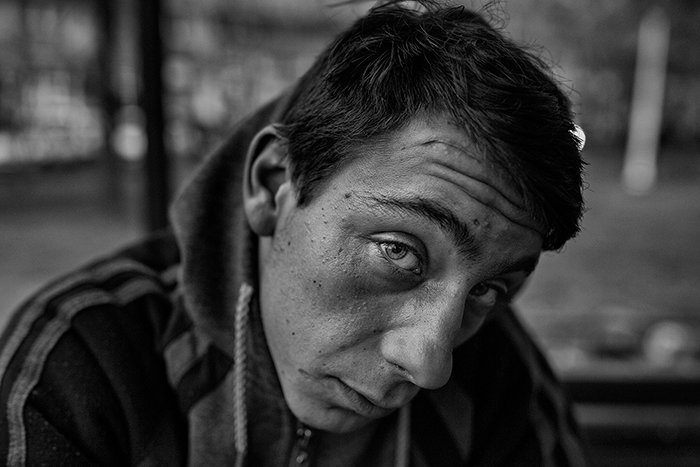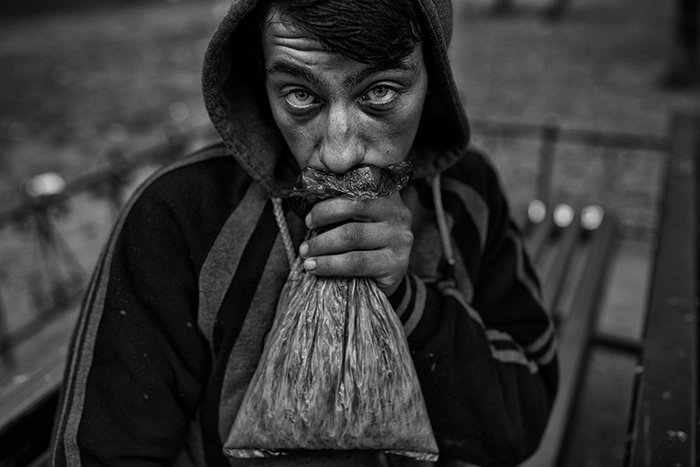When you ask around, people answer that they no longer exist. The children of the sewers are a legend, they say. However, standing before me is living proof of their existence, Chris. Our paths converged in an unexpected place, above ground, right in front of Bucharest's bustling Gara de Nord, the city's principal railway station. Chris is just one among the multitude of individuals who persist in inhabiting the subterranean labyrinth beneath the very streets of this capital city.

I’m in his ‘home-garden’, as he calls it, surrounded by low and dark clouds. He’s nervous and he keeps looking around, as if he is scared that someone will see us. He takes a look at the drawings on my wrist. I try to break the ice by showing and explaining the meaning of some of my tattoos. I then ask him the meaning of the marks in his arms. They are not exactly drawings. In fact, his arms are full of scars. He explains that he made them himself with pieces of glass.

“I was trying to forget the pain with a new type of pain. The simpler way to overcome the trauma of the dark past I had. But those wounds, however, disappeared quickly with time, letting that deep pain come back to visit me again”.

At regular intervals, he takes deep breaths from the bag he's holding in his hand, which inflates like a large balloon. He's addicted to Aurolac, a potent solvent with incapacitating and lethal effects. This metallic glue-paint is heated and inhaled from plastic bags, making it the most commonly abused drug due to its affordability. It temporarily alleviates the sensations of cold and hunger, providing a powerful high. Nevertheless, it inflicts devastating harm on the brain, leading to irreversible damage.

“When I sniff this stuff everything makes sense to me. Objects move slower, things turn from gray to bright colors, noises become music. I go into a world where I find myself more at ease and where I’m not scared anymore”.

Chris had a troubled and unstable childhood. His physical and mental health were in a terrible state and he faced several surgical operations. He doesn’t remember much about his childhood, or perhaps he doesn’t want to talk about the people who left him alone forever in the world.

And maybe he doesn’t even need to say anything. His eyes already tell what he cannot express with words. Since then, after four years of living rough, in and out of crowded orphanages, he ended up being homeless on the streets. He, along with thousands of others, is an orphan to a family who could not afford to keep him. The legacy of a policy that aimed to increase the country’s workforce and reverse the low birth and fertility rates. An economic momentum to support this sudden population growth that never materialized.

Many of them, not knowing where else to go, took refuge in the disused sewers of the city, where they could keep relatively warm using the heat coming from the pipelines. A sort of shadow kingdom, defined by rules and laws that are valid only there. Taking care of them, almost exclusively, are volunteers from a few NGOs that provide them with assistance, food and school supplies and school placement programs. Among them is Parada, on the front line, that since 1996 has assisted almost two thousand street children, less than half compared to the 90’s. Chris lives down here. In the sewers, to be exact. It is one of the few sewage channels that have remained in the central area. The majority of the homeless have been forced to move out into the suburbs, making the invisible even less visible.




